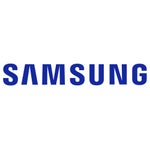News
Samsung Galaxy S26 Edge Battery Upgrade Disappoints: New Leak Reveals 4200mAh Specs
Samsung Galaxy S26 Edge Battery Upgrade Disappoints: New Leak Reveals 4200mAh Specs
Samsung’s latest Galaxy S26 Edge delivers a modest battery boost from 3,900 mAh to a marketed 4,200 mAh while sticking with traditional lithium-ion cells. The decision, confirmed by China’s 3C certification, falls short of expectations for next-generation silicon-carbon batteries, leaving Samsung trailing competitors like OnePlus, Xiaomi, and Vivo that now offer 5,700–6,000 mAh silicon-carbon packs for longer runtimes and faster charging.
Key Specifications at a Glance
-
Rated capacity: 4,078 mAh
-
Typical capacity: 4,200 mAh (7.7% increase over S25 Edge)
-
Battery chemistry: Lithium-ion
-
Wired charging: 25 W (≈ 75 minutes to full)
-
Wireless charging: 15 W (likely unchanged)
-
Device thickness: Ultra-slim 5.5 mm
Why Samsung Chose a Conservative Upgrade
Samsung’s cautious roadmap for emerging battery technologies stems from a commitment to safety and long-term reliability. Following the Galaxy Note 7 battery recall, the company has adopted extensive testing and validation protocols before introducing new chemistries. Internal reports reveal ongoing trials of silicon-carbon and solid-state cells, but commercialization depends on passing rigorous durability, thermal safety, and production consistency benchmarks.
Lessons from the Past
-
Thermal safety: Preventing overheating and thermal runaway remains paramount.
-
Volume expansion: Silicon-based anodes can swell up to 300% during charge cycles; mitigating this requires new composite structures.
-
Manufacturing scale: Ensuring uniform quality across millions of units demands refined, solvent-free electrode processes.
How It Stacks Up Against Rivals
| Device | Capacity | Chemistry | Wired Charge | Full Charge Time |
| Galaxy S26 Edge | 4,200 mAh | Lithium-ion | 25 W | ≈ 75 minutes |
| OnePlus 13 | 6,000 mAh | Silicon-carbon | 100 W | 36 minutes |
| Xiaomi 15 Ultra | 6,000 mAh | Silicon-carbon | 90 W | 45 minutes |
| Vivo X200 Pro | 5,700 mAh | Silicon-carbon | 90 W | 40 minutes |
Despite its slim 5.5 mm profile, Samsung’s 4,200 mAh battery lags behind competitors offering 30–40% more capacity. Silicon-carbon technology not only increases energy density packing more power per cubic centimeter but also supports faster charging and improved thermal management.
Real-World User Impact
-
Everyday endurance: Light users can expect up to two days between charges. Moderate users will comfortably last a full day with 20–30% remaining by evening. Heavy users may still need a mid-day top-up.
-
Charging experience: The standard 25 W wired charger fills the battery in around 75 minutes. In contrast, rival silicon-carbon phones can regain 50–60% charge in 15–20 minutes.
-
Portability vs. power: The ultra-slim chassis enhances pocketability and handling but restricts battery volume, emphasizing form factor over raw capacity.
Samsung’s Future Battery Roadmap
Samsung continues to invest heavily in next-generation cells:
-
Solid-state batteries: Targeting up to 900 Wh/L energy density with oxide electrolytes for enhanced safety and longevity.
-
Advanced silicon-carbon: Exploring dry-electrode manufacturing to eliminate solvents, boost production efficiency, and fine-tune electrode thickness.
-
Silver-carbon composites: Leveraging silver-coated materials to improve conductivity and cycle life.
Commercial adoption of these innovations depends on resolving current challenges chiefly, silicon expansion, manufacturing complexity, and cost. Samsung’s “safer first” philosophy means mainstream rollout may lag behind early movers.
User Considerations: Is the S26 Edge Right for You?
-
Value long-term reliability: If proven safety and gradual improvements matter more than headline specs, the S26 Edge delivers.
-
Need for fast charging: Consider phones with 90–100 W wired charging and larger silicon-carbon batteries.
-
Love ultra-slim design: Samsung’s 5.5 mm chassis is among the thinnest on the market, offering a sleek, ergonomic feel.
Frequently Asked Questions
Q: Will the Galaxy S26 Edge ever get a silicon-carbon battery?
Samsung is actively testing silicon-carbon and solid-state cells but has not confirmed a timeline for their commercial release.
Q: Is 4,200 mAh enough for a full day’s use?
Yes. Light users can stretch up to two days, while moderate users will finish the day with a comfortable buffer. Heavy users may need a quick mid-day top-up.
Q: How fast can the S26 Edge charge?
It supports 25 W wired charging, reaching a full charge in about 75 minutes. Competitors offer 90–100 W speeds that refill 50–60% in under 20 minutes.
Q: Why didn’t Samsung match competitors’ battery tech?
Samsung prioritizes thorough safety testing and long-term reliability over rapid adoption, a lesson reinforced by past battery incidents.
Q: Does the slim 5.5 mm design compromise battery health?
No. Reinforced materials and optimized thermal management ensure safety and maintain battery longevity.
Related Articles
-
Samsung's S26, Edge & Ultra Details Leak: 200MP Camera, New 50MP Sensors & Why the S26+ Was Dropped
-
Samsung Galaxy S25 Edge Specs Leak Again: Full Details Revealed
Conclusion
The Galaxy S26 Edge’s battery upgrade offers only incremental gains, opting for proven lithium-ion cells over cutting-edge silicon-carbon technology. While this approach underscores Samsung’s commitment to safety and durability, it leaves the device at a disadvantage in capacity, charging speed, and perceived innovation. Consumers seeking maximum battery life and rapid charging will find more compelling options in rival flagships. However, those prioritizing build quality, long-term reliability, and a razor-thin design may still appreciate what the S26 Edge brings to the table.












